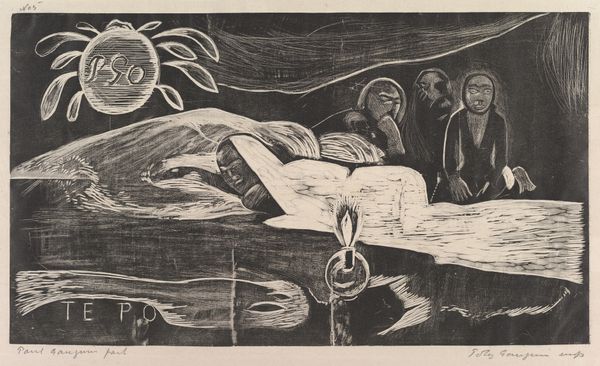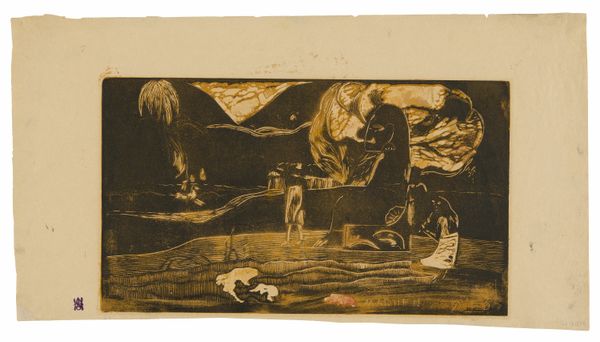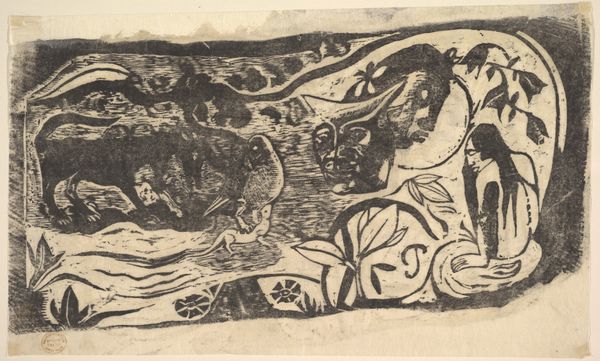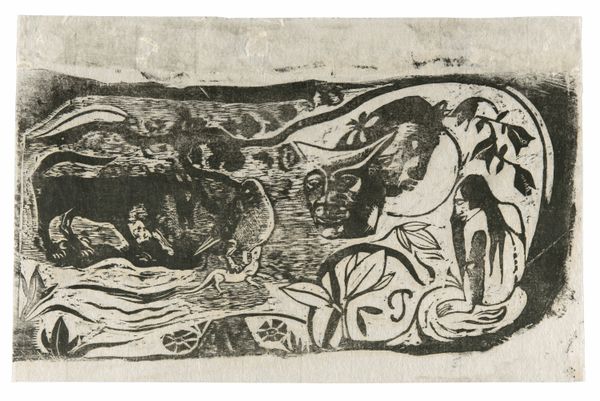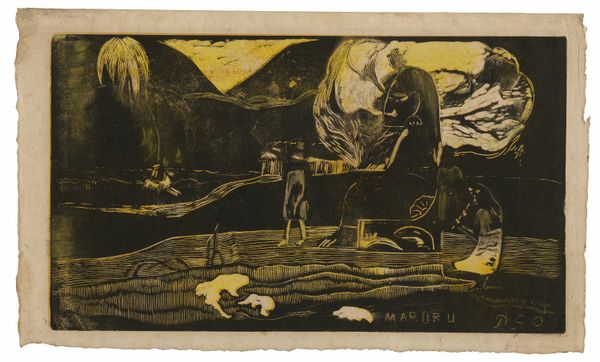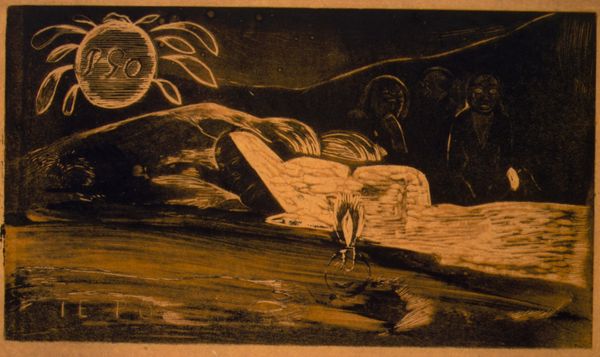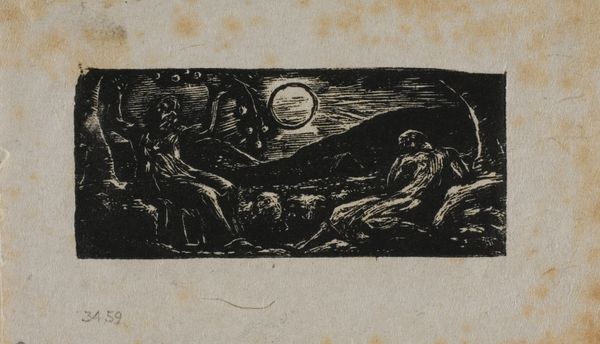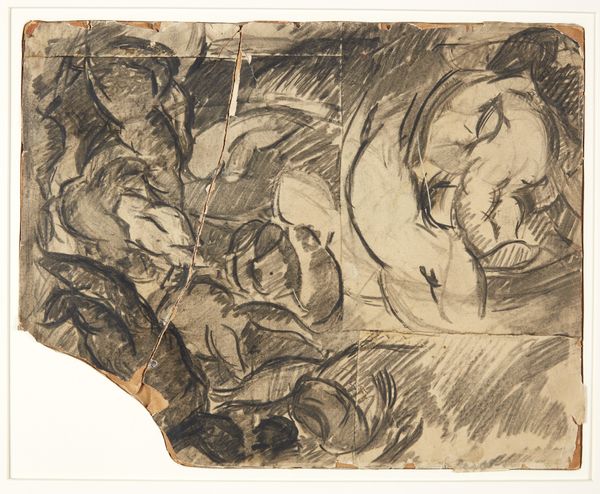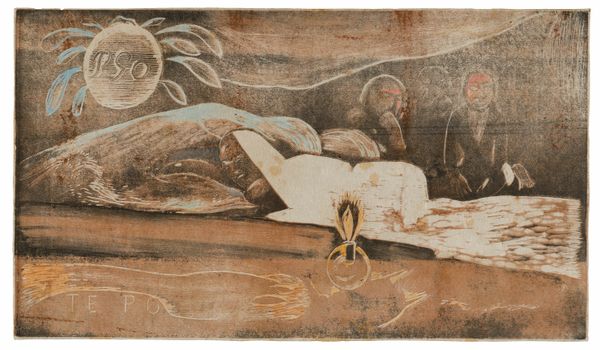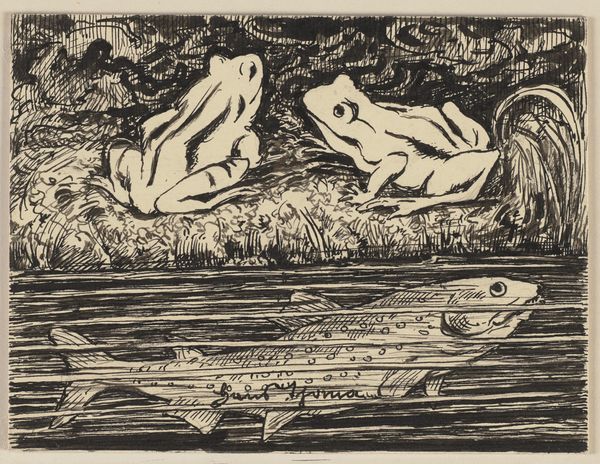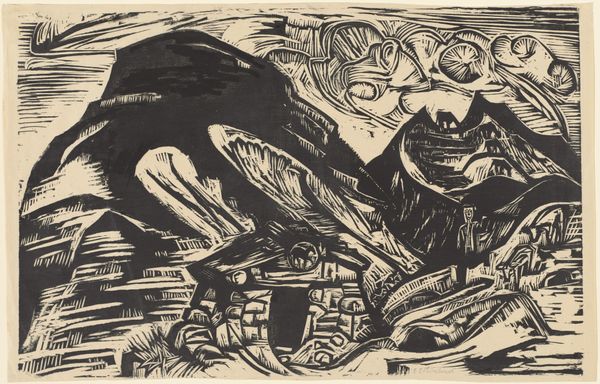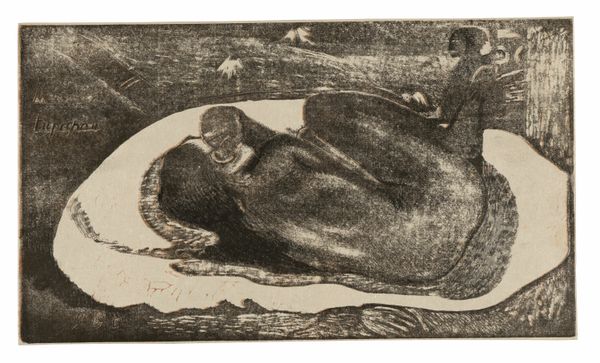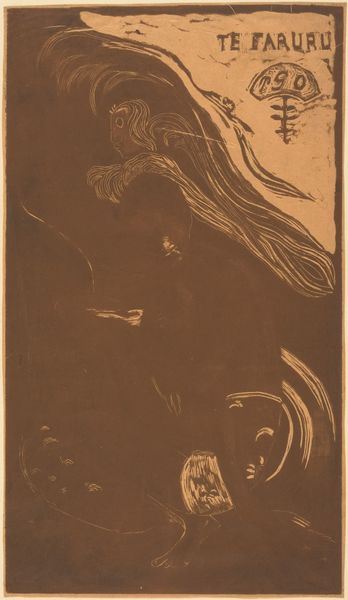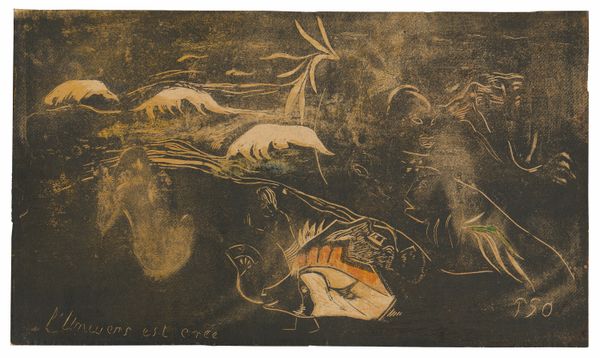
print, etching, woodcut
ink drawing
narrative-art
etching
landscape
etching
figuration
woodcut
symbolism
post-impressionism
Copyright: National Gallery of Art: CC0 1.0
Editor: We're looking at Paul Gauguin's "Te Po (The Long Night)," made around 1894-1895. It's an etching and woodcut print, and the heavy lines and dark palette create this overwhelming sense of stillness and unease. What's your perspective on it? Curator: Well, immediately I'm drawn to the materiality of the print itself. Look at the layered textures, the ways the woodcut and etching processes interact. It speaks to a certain kind of labor, doesn't it? The artist physically carving, etching, manipulating the materials. Gauguin is not simply representing an idea of "night"; he's actively *making* a "night" through this process. What does this suggest to you about how he views Polynesian culture and his relationship to it? Editor: That's fascinating. I hadn't thought about the labor involved in creating that feeling. So, is it about authenticity and engaging with the material reality of the process itself? Curator: Partly, yes. Think about Gauguin's broader project. He sought a pre-industrialized paradise, yet he’s using highly industrialized techniques – printing, a reproducible medium. It creates a tension. The image romanticizes a culture but depends on modes of production associated with the colonizing world. Do you see that conflict embedded in the finished piece? Editor: Definitely. It's not a straightforward portrayal. I guess I assumed he wanted a pure, untouched kind of art form. Curator: Exactly. That assumption hides a deeper entanglement. Gauguin couldn't escape his own cultural and historical context. His “primitive” aesthetic is itself a product of a very specific time and place within the development of art and its markets. Editor: So the means of production become a commentary in themselves, which leads me to consider that this “untouched” aesthetic may itself be a colonial fantasy imposed on Polynesian culture. I guess what appears natural and raw isn’t as free of artistic fabrication as I thought! Curator: Precisely! Looking at the material conditions and techniques challenges the idealized image. Now you are approaching a materialist view! Editor: Wow, that totally changes how I see the work. Thanks!
Comments
No comments
Be the first to comment and join the conversation on the ultimate creative platform.
